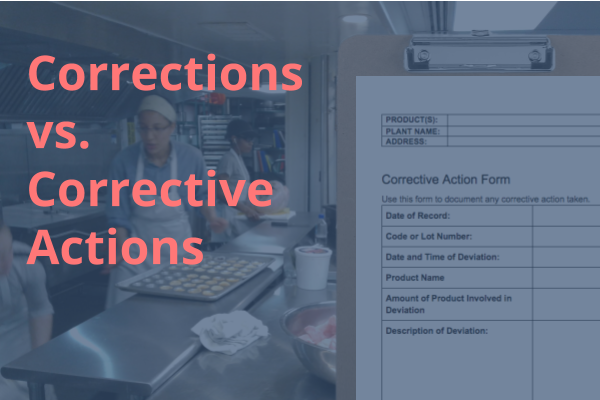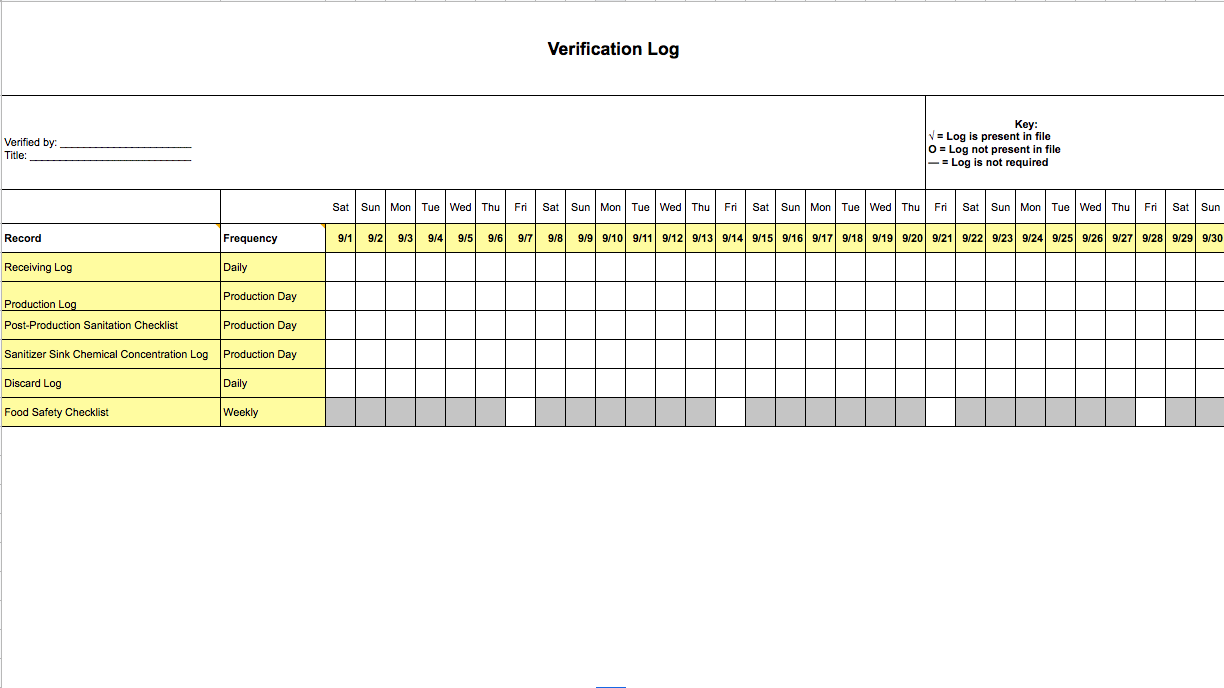HACCP Implementation in a Shared Kitchen Environment
Introduction
This paper examines the challenge of HACCP implementation in a shared kitchen context. The first sections aim to guide a shared kitchen operator in assessing whether they can accommodate user-managed HACCP programs in their facility. The second half of the paper offers recommendations for how a shared kitchen operator may align their operations to support HACCP implementation. These recommendations are also provided in the sections below.
Enter your email below to download the white paper, HACCP Implementation in a Shared Kitchen Environment
Table of Contents
Preface
A Quick Primer on HACCP
The Feasibility of HACCP Implementation in a Shared Kitchen
When is a HACCP Plan Required?
Liability
Recommendations for Shared Kitchen Operators
General
User Relationships
Operations
Facility Layout
Facility Maintenance
Conclusion
Recommendations For Shared Kitchen Operators
General
Comply with applicable regulations The first step in supporting HACCP programs is to comply with all applicable health regulations (federal, state, local). If there are outstanding health-code violations, the operator should consider addressing those first.
Understand HACCP Principles The simplest way to do this is to take a HACCP course (they are available online) and read through several HACCP plans. It is absolutely critical for an operator to have a thorough understanding of HACCP so that they can assess the plans and practices of shared kitchen users.
User Relationships
Set expectations with prospective users An operator should set clear expectations about how their shared kitchen may (or may not) be able to support HACCP implementation. A comprehensive tour of the space and candid explanation about how operations are conducted will support a prospective user in assessing the site’s suitability for their HACCP implementation. If an operator already has HACCP programs operating in their space, they may be able to offer more practical details about how those programs are effectively managed.
Assess each case individually Since each production process entails unique food safety risks and HACCP supports a risk-based approach, the shared kitchen operator must consider each prospective HACCP program individually. At minimum, the operator should consider the final product, the process steps and the associated hazards. Then, the operator will be able to assess whether effective HACCP implementation is feasible in their facility. Note that this oversight is meant to reduce the shared kitchen’s liability exposure, not to micromanage the user’s operations.
Protect public health and liability If a user is producing illegally without a HACCP plan or is implementing their HACCP program improperly, the operator should immediately suspend that processor’s use of the space until they are able to faithfully enact their HACCP program. This should not be viewed as punitive but rather as an effort to protect the shared kitchen and all of the users operating in the space.
Operations
Good news! HACCP is most easily implemented in shared kitchens where the operator has a “hands off” approach. Here’s why: HACCP requires the food processor to maintain tight control over their process steps and keep records proving that those processes were performed correctly.
If the shared kitchen operator provides services that are related to food safety— for example, cleaning processing areas on a recurring basis— the user working under a HACCP plan cannot (legally) trust that those activities are being performed properly. Instead, the user must confirm that those cleaning activities are effective and verify that they are being performed according to schedule and keep records to prove it. Maintaining this kind of coordination with the shared kitchen operator is sufficiently difficult that most users implementing a HACCP program choose to conduct all sanitation activities themselves— even if the operator is already providing those services. Below are some specific recommendations for building HACCP-aligned operations in shared kitchens:
Define who is responsible for maintaining prerequisite programs (PRPs) Operators should define who is responsible for maintaining prerequisite programs and share this information with users before they begin operating in the space. This way, both the operator and user understand what systems they are accountable for maintaining and where they can demand accountability. PRPs may be grouped into three broad categories:
Operator’s responsibility: This refers to prerequisite programs which the operator is responsible for maintaining and documenting. These programs typically favor centralized management, and may include:
◈ Pest control
When dedicated cold storage spaces are not available, lockable, vented totes can minimize contamination risks.
◈ Maintenance of shared equipment
◈ Waste management
◈ Clean water supply
User’s responsibility: This refers to PRPs which the user must enact and maintain on their own. Typically, these programs are unique to each food processor and may include:
◈ Product traceability
◈ Supplier verification
◈ Food handling practices
Overlapping Responsibility: This refers to PRPs that may be maintained by both the operator and the user. For example,
◈ Control of employee health -- both the operator and user have employees who must comply with employee health policies.
◈ Allergen control -- The operator may control allergens through the structural zoning of space while users must maintain allergen control through their production process and storage methods.
◈ Sanitation activities -- The operator may offer a basic sanitation program while the user conducts additional sanitation activities on their own.
By defining responsibilities and enforcing accountability (even among their own staff), the operator protects the kitchen from a “tragedy of the commons” scenario where facility conditions deteriorate over time.
Allow users to retain process control Users should be allowed to pursue a high degree of autonomy so that they can maintain total control of their process and ensure their pre-requisite programs are effective. Any “concierge” services or prerequisite programs offered by the shared kitchen operator should be structured so that a business can “opt out” and conduct those activities themselves, according to their HACCP plan.
Make food safety records available: When the operator performs a prerequisite program related to food safety, a record of that activity should be produced and made available for users to access. This may include:
◈ Sanitation records
◈ Records of equipment maintenance and calibration
◈ Refrigeration logs
◈ MSDS records and product specs for all chemicals/consumables onsite
◈ Pest control reports
◈ Receiving logs (if raw ingredients are received by the operator on behalf of the user)
Strive for operational consistency and communicate changes A processor’s HACCP plan will define not only the details of their specific process but also details pertaining to the overall facility and the prerequisite programs applied by the operator. In the same way that a change to the business’s production process would require them to update their HACCP documentation, so would operational changes implemented by the shared kitchen operator at the site level.
While it is important for operators to continuously improve their systems, it is also important to acknowledge that each user’s HACCP documentation must reflect these changes once they occur. For this reason, the operator should communicate any upcoming changes to food safety systems with the entire user base. This will give users an opportunity to consider those changes and adjust their HACCP plans accordingly.
Facility Layout
Physical separation between workstations is a simple solution for minimizing cross contamination.
The arrangement of workstations, storage, and utility areas in a shared kitchen can be optimized to support HACCP implementation. While it may be prohibitively expensive to undertake large scale infrastructure improvements, an operator may be able to address hazards in the facility layout by adjusting the use-of-space. Fortunately, HACCP is a flexible system that allows a processor to minimize hazards using any method that is safe and effective. An operator may consider the following strategies:
Offer dedicated access processing spaces If possible, an operator should offer dedicated-access processing spaces that a single business can occupy long term. This arrangement allows users to operate with high levels of process control, favoring a simpler HACCP program.
Use distance and barriers to minimize contamination risks in shared spaces If businesses operate in a shared space, an operator can structurally mitigate contamination risk through physical barriers (e.g. partitions) or a buffer zone between processing areas. Avoid layouts where prep tables are directly adjacent to each other and where cross contamination may easily occur.
Zone food processing and storage activities based on risk profile An operator may zone the space based on the types of risks presented by processing activities. This structurally minimizes opportunities for contamination. Types of zoning include:
◈ Allergen-based zoning: This may confine certain allergens to specific zones
◈ Hygienic zoning: Higher risk processing activities are confined to areas where higher standards of hygiene and sanitation are in place.
◈ Ingredient-based zoning: The use of certain ingredients are confined to specific zones, based on associated microbiological hazards
Offer dedicated-access storage spaces An operator may offer dedicated-access storage spaces to protect stored goods from interference or contamination. Possible solutions may include individually lockable storage closets or cages. In cold storage, dedicated reach-in refrigerators allow for individual temperature control, product security, and minimization of contamination risk from other users’ products.
Facility Maintenance
Implementing a HACCP program requires the food processor to assess any risk that may occur— including hazards that originate from the building itself. Even in a conventional food processing facility, it is common for the renter to assess a hazard that the only the building owner can repair, such as a leaky roof. In the shared kitchen environment, the user has even less control over facility conditions than a food processor operating in a conventionally rented space, and this may be the cause of some anxiety. Below are some ways that a shared kitchen operator can support HACCP programs through effective facility maintenance.
Conduct professional repairs Repairs should be conducted by professionals and DIY-fixes (e.g. duct-taped pipes) should be avoided. Because these types of temporary repairs may introduce a food safety hazard, users operating under a HACCP plan will be unable to use that piece of equipment until it is completely repaired and the hazard is eliminated.
Align facility conditions with cGMPs In order to create a safe environment for food processing, operators should meet the Current Good Manufacturing Practices outlined in the Code of Federal Regulations. Regardless of whether the users in the space are FDA-regulated, this section provides a widely accepted set of standards for safe food processing. Below are several linked guides and the original text of the regulation:
Additional Resources
FDA Reader Guides:
Source Texts:

















































